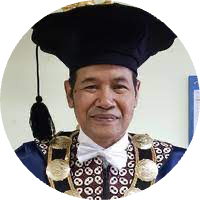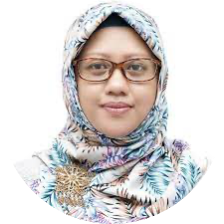Learning the concept of two-dimensional figure through Borobudur artifacts for lower graders of elementary school mathematics
DOI:
https://doi.org/10.21831/ej.v2i2.39885Keywords:
Borobudur temple, ethnomathematics, elementary school math, two-dimensional figure areaAbstract
Important changes in mathematics teaching need to be made to accommodate the constantly changing students' demography in the lower grades of Elementary Schools, particularly in mathematics competence. Teachers must contextualize mathematics learning by linking mathematics content to the culture and real-life experiences of low-grade students at the Elementary School level. Mathematical concepts taught in elementary schools shall be relevant with students' personal experiences in everyday life. Throughout history, mathematics has been widely used by different groups in a variety of ways. Arithmetic and geometry are used to meet the daily needs of society, both culturally and socially. Ethnomathematics is defined as the way people from different cultures use mathematics in their daily lives. Elementary school students are only required to learn the concept of simple two-dimensional figure in their mathematics learning. Some complexities in this topic are related to the way to deal with irregular shape of two-dimensional figures or the different length of the sides, which can actually be solved through the removal or addition of the different parts of the shape to resemble the main shape.
References
Banks, J. A. (1991). A curriculum for empowerment, action, and change. In C. E. Sleeter (Ed.), Empowerment through multicultural education. State University of New York Press.
Baturo, A., & Nason, R. (1996). Student teachers' subject matter knowledge within the domain of area measurement. Educational Studies in Mathematics, 31(3), 235–268. https://doi.org/10.1007/BF00376322
D'Ambrosio, U. (2013). Etnomatemática - Elo entre as tradií§íµes e a modernidade (5th ed.). Autíªntica Editoria.
Danoebroto, S. W. (2012). Model pembelajaran matematika berbasis pendidikan multikultural. Jurnal Pembangunan Pendidikan: Fondasi Dan Aplikasi, 1(1), 94–107. https://doi.org/10.21831/jppfa.v1i1.1054
Fauzan, A. (2002). Applying Realistic Mathematics Education (RME) in teaching geometry in Indonesian primary schools [University of Twente]. https://ris.utwente.nl/ws/files/6073228/thesis_Fauzan.pdf
Gay, G. (2002). Preparing for culturally responsive teaching. Journal of Teacher Education, 53(2), 106–116. https://doi.org/10.1177/0022487102053002003
Kementerian Pendidikan dan Kebudayaan Republik Indonesia. (2017). Model silabus meta pelajaran Skolah Dasar/Madrasah Ibtidaiyah (SD/MI). https://docplayer.info/208386755-Model-silabus-mata-pelajaran-sekolah-dasar-madrasah-ibtidaiyah-sd-mi-mata-pelajaran-matematika.html
Kordaki, M., & Potari, D. (1998). Children's approaches to area measurement through different contexts. The Journal of Mathematical Behavior, 17(3), 303–316. https://doi.org/https://doi.org/10.1016/S0364-0213(99)80065-2
Ladson-Billings, G. (1995). Toward a theory of culturally relevant pedagogy. American Educational Research Journal, 32(3), 465–491. https://doi.org/10.3102/00028312032003465
Lee, O. (2003). Equity for linguistically and culturally diverse students in science education: A research agenda. Teachers College Record, 105(3), 465–489. https://doi.org/10.1111/1467-9620.00247
Marsigit, M. (2016). Pembelajaran matematika dalam perspektif kekinian. Math Didactic: Jurnal Pendidikan Matematika, 2(3), 132–141. https://doi.org/10.33654/math.v2i3.40
Miles, M. B., & Huberman, A. M. (2009). Qualitative data analysis: An expanded sourcebook (2nd ed.). Sage Publications. https://books.google.co.id/books?hl=id&lr=&id=U4lU_-wJ5QEC&oi=fnd&pg=PA10&dq=Qualitative+data+analysis+Miles&ots=kFTH2HVZ1T&sig=ctEW_Fy8_VcHJaSI16_m2hLHAKA&redir_esc=y#v=onepage&q=Qualitative data analysis Miles&f=false
National Council for Teachers of Mathematics. (2011). Professional standards for teaching mathematics. National Council of Teachers of Mathematics, Inc.
Orey, D. C., & Rosa, M. (2008). Ethnomathematics and cultural representations: Teaching in highly diverse contexts / Etnomatemática e representaí§íµes culturais: ensinando em contextos altamente diversos. Acta Scientiae, 10(1), 27–46. http://posgrad.ulbra.br/periodicos/index.php/acta/article/view/76
Rosa, M., & Orey, D. C. (2006). Abordagens atuais do programa etnomatemática: delineando um caminho para a aí§í£o pedagógica. Boletim de Educaí§í£o Matemática, 19(26), 1–26. https://www.redalyc.org/pdf/2912/291221866003.pdf
Torres-Velasquez, D., & Lobo, G. (2005). Research, reflection, and practice: Culturally responsive mathematics teaching and English Language learners. Teaching Children Mathematics TCM, 11(5), 249–255. https://doi.org/10.5951/TCM.11.5.0249
Zacharos, K. (2006). Prevailing educational practices for area measurement and students' failure in measuring areas. The Journal of Mathematical Behavior, 25(3), 224–239. https://doi.org/10.1016/j.jmathb.2006.09.003
Zeichner, K. (1996). Educating teachers to close the achievement gap: Issues of pedagogy, knowledge, and teacher preparation. In Closing the achievement gap: A vision for changing beliefs and practices (2nd ed., pp. 56–76). Association for Supervision and Curriculum Development.
Downloads
Published
How to Cite
Issue
Section
Citation Check
License
The authors submitting a manuscript to this journal agree that, if accepted for publication, copyright publishing of the submission shall be assigned to Ethnomathematics Journal. However, even though the journal asks for a copyright transfer, the authors retain (or are granted back) significant scholarly rights.

Ethnomathematics Journal by https://journal.uny.ac.id/index.php/ethnomath is licensed under a Creative Commons Attribution-ShareAlike 4.0 International License.












